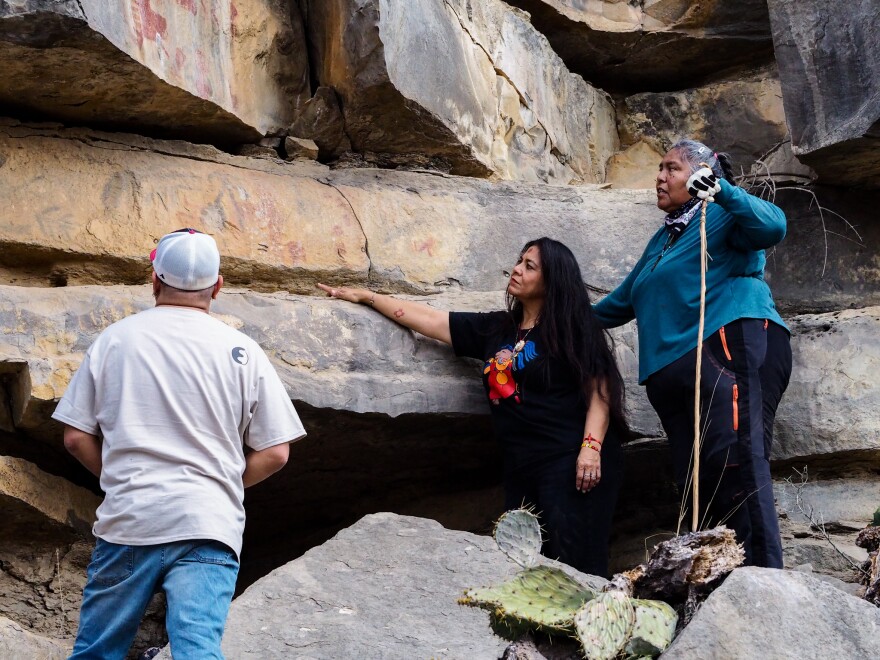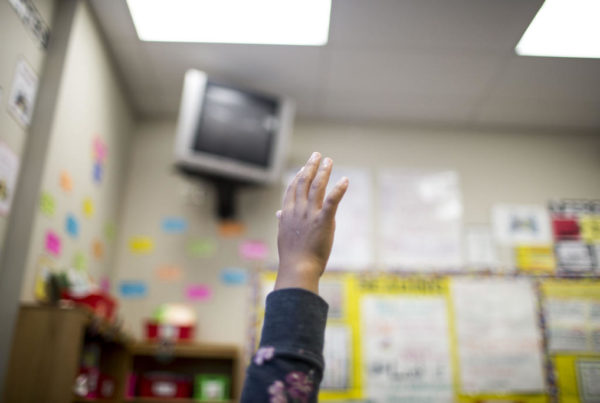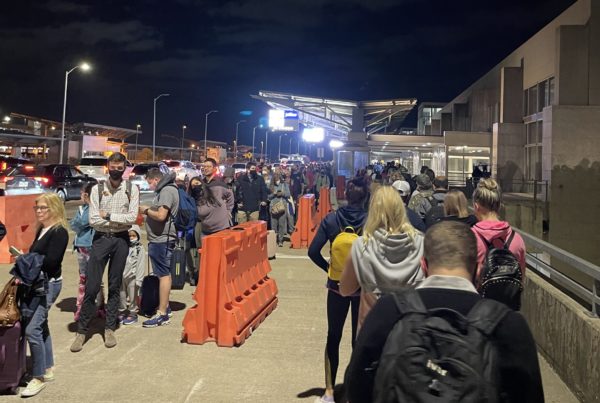Just outside of San Angelo is Paint Rock, a stretch of rocky cliff holding over 2,000 years worth of history told through paintings made by Native Americans. Like the majority of sacred Indigenous sites in Texas, it’s on private land. But a new project underway aims to make the site more accessible which will eventually culminate in a variety of interactive, educational websites.
Paint Rock is a spiritually significant place to several tribes that once passed through the area, such as the Comanche. In early March, a new preservation and education project kicked off with a gathering of about 20 people, including academics and researchers along with elders and members of the Comanche Nation.
But up until a few days before, due to various complications, it almost didn’t happen.
“I prayed in the morning, and I prayed that evening, and the next day they fell out of the sky,” is how Comanche/Pueblo archeologist and anthropologist Mary Weahkee described it when everything fell into place.
The group was a mix of the young and old. Over a weekend, they studied the paintings and set aside special times for elders to teach children other elements of the Comanche Nation’s culture and language. Some of the elders there are some of the last speakers of the Comanche language in the world. Weahkee also specializes in making weapons. During a lunch break, she demonstrated how to spin yucca to make rope.
Many described the opportunity to see this gathering place for their ancestors while learning about the tribe’s traditions as very special. Martina Minthorn is a Comanche Nation Tribal Historic Preservation Officer.
“Just being able to see that we once came through this area and we left our marking, and our young men that did their vision quests here, and the prayers that were said on behalf of the generations to come,” said Minthorn. “And looking at us, it came full circle. We came back here.”
That feeling is something Jeremy Elliott, an Abilene Christian University associate professor of English, wanted to bring to people since he first encountered Paint Rock in 2019. Elliott and a team of historians and researchers began brainstorming ways to make sacred religious sites on private land more accessible to Indigenous people.
At first, they planned to build a website just featuring digital 3D models of the paintings. But Elliott said that changed when Mary Weahkee visited Paint Rock.
“She got it in a way that we didn’t,” he said. “We realized that we probably need to reorient our research away from ‘How do we model these the best way?’ to ‘How can we, in part of the process, document this Indigeonous knowledge?’”
After watching Weahkee interact with the paintings, the team expanded its vision for the website to add videos of Indigenous people reading the paintings, with a focus not just on what they mean, but how they are meant to be read. Paint Rock’s dynamic artwork relies on solar interactions to tell its full story. Weahkee says different times of the year, the sun casts shadows that give the paintings new meanings.
Paint Rock has been owned by the Campbell family since 1880. According to Kay Campbell, the family supports the project.
“I’m so interested that Jeremy and some other folks are documenting things that they’re finding here that haven’t been documented before, because this is full of history,” said Campbell.
The work is currently funded through a Humanities Texas grant. Elliott and the team plan to build a separate website for elementary teachers to use as they teach Texas history from an Indigenous point of view.
“We can have kind of a deeper and richer education in regards to Texas history,” Elliott said. “Because I know, what, 2nd and 4th grade both you go over Texas history, so let’s get something other than the Alamo in there. Let’s go back 2,000 years.”
The team also wants to host more gatherings at Paint Rock not only with the Comanche, but other tribes such as Apache, Hopi and Pueblo that likely contributed paintings to the wall.
For now, the project will focus on Paint Rock, but Elliott says it could potentially expand to other historic rock art sites across the state.














